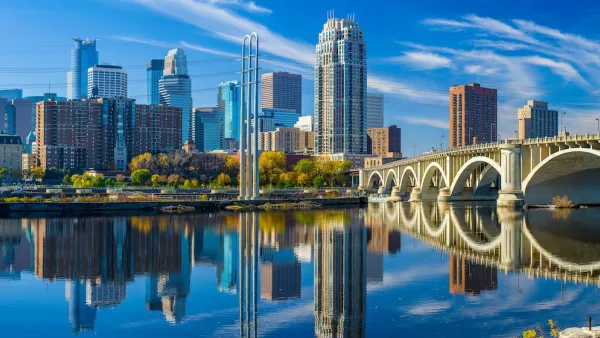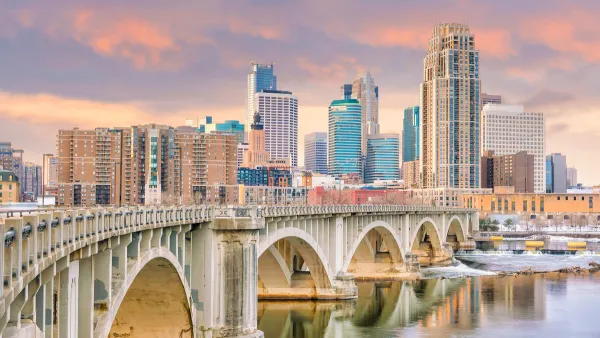Included in the 2005 federal transportation bill was $100 million for four regions to invest in bike and pedestrian infrastructure to determine, essentially, if they build it, will they bike and ride more and drive less. The final results are in.
The Federal Highway Administration Bike/Walk Pilot pilot program, authorized by the 2005 federal transportation reauthorization bill known as SAFETEA-LU shows conclusively that infrastructure investments increase bicycle and pedestrian mode share of trips.
The Nonmotorized Transportation Pilot Program (NTPP) "provided over 25 million dollars each to four communities to demonstrate how improved walking and bicycling networks can increase rates of walking and bicycling. FHWA was required to report on the results of the NTPP. An Interim Report was submitted to Congress in January 2008. A Final Report was submitted in April 2012."
For each region, partner agencies were chosen to administer the grant funds:
- Columbia, Missouri; via GetAboutColumbia
- Marin County, California; via Walk-Bike Marin
- Minneapolis, Minnesota; via Bike Walk Twin Cities
- Sheboygan County, Wisconsin via the county planning dept.
Smart Mobility, a project of the Rails to Trails Conservancy, that worked with FHWA added that "the Pilot is designed to demonstrate that bicycling and walking can represent a major part of an affordable, sustainable transportation solution."
Key outcomes of the NTPP described in this report [PDF] include:
- Counts in the four pilots saw an average increase of 49 percent in the number of bicyclists and a 22 percent increase in the number of pedestrians between 2007 and 2010.
- Mode share increases in the pilot communities to bicycling and walking and away from driving from 2007 to 2010 outpaced the national average from 2001 to 2008.
- For the communities in sum, bicycling mode share increased 36 percent, walking mode share increased 14 percent, and driving mode share decreased 3 percent between 2007 and 2010.
Thanks to Greenwire
FULL STORY: National Bike Month, a good time to put on your helmet and saddle up

National Parks Layoffs Will Cause Communities to Lose Billions
Thousands of essential park workers were laid off this week, just before the busy spring break season.

Retro-silient?: America’s First “Eco-burb,” The Woodlands Turns 50
A master-planned community north of Houston offers lessons on green infrastructure and resilient design, but falls short of its founder’s lofty affordability and walkability goals.

Delivering for America Plan Will Downgrade Mail Service in at Least 49.5 Percent of Zip Codes
Republican and Democrat lawmakers criticize the plan for its disproportionate negative impact on rural communities.

Test News Post 1
This is a summary

Test News Headline 46
Test for the image on the front page.

Balancing Bombs and Butterflies: How the National Guard Protects a Rare Species
The National Guard at Fort Indiantown Gap uses GIS technology and land management strategies to balance military training with conservation efforts, ensuring the survival of the rare eastern regal fritillary butterfly.
Urban Design for Planners 1: Software Tools
This six-course series explores essential urban design concepts using open source software and equips planners with the tools they need to participate fully in the urban design process.
Planning for Universal Design
Learn the tools for implementing Universal Design in planning regulations.
EMC Planning Group, Inc.
Planetizen
Planetizen
Mpact (formerly Rail~Volution)
Great Falls Development Authority, Inc.
HUDs Office of Policy Development and Research
NYU Wagner Graduate School of Public Service




























